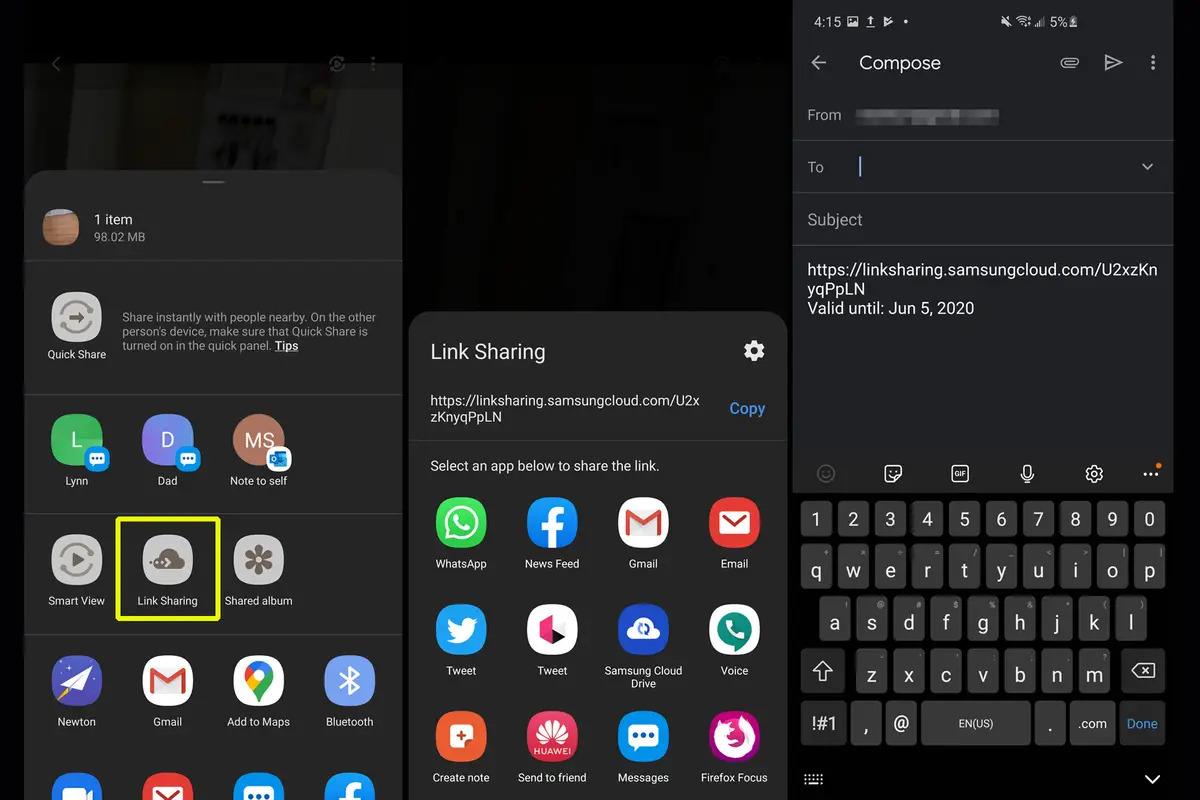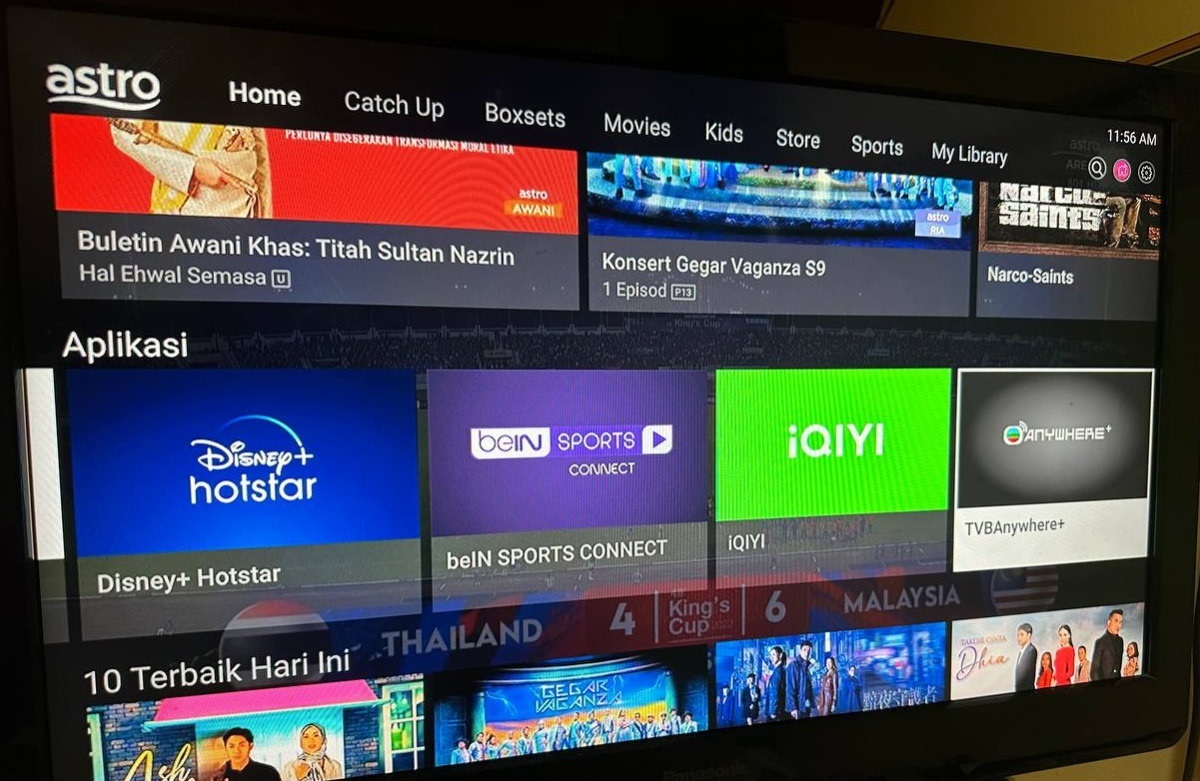Introduction
Welcome to the digital age, where videos have become an integral part of our everyday communication. Whether it’s a personal vacation video, a business presentation, or a creative project, sharing videos with others has never been easier. However, there’s a common challenge that many of us face when it comes to sending videos via email – file size limitations.
Email services typically impose restrictions on the size of attachments that can be sent. This can be frustrating, especially when you want to share a high-quality video with someone but find yourself constrained by these limitations. Fortunately, there are ways to overcome this hurdle and successfully send large videos via email.
In this article, we will explore different methods and solutions for sending videos that are too big for traditional email attachments. Whether you’re a beginner or a tech-savvy individual, this guide will provide you with the necessary knowledge to overcome size restrictions and share your videos with ease.
Before we dive into the solutions, it’s important to understand why videos can be too big for email attachments in the first place. Videos, particularly high-resolution ones, tend to occupy a significant amount of storage space. The larger the file, the more challenging it becomes to send it via email, especially if the recipient’s email service has strict attachment size limits.
Now that we have an understanding of the issue at hand, let’s explore some options that can help you send those large videos without any hassle. Whether you need to send a video for personal or professional purposes, these methods will come to your rescue. So, let’s get started!
Why videos can be too big for email attachments
There are several factors that contribute to the large file size of videos, making them difficult to send as email attachments. Understanding these reasons will help you comprehend why traditional email services have limitations on attachment sizes.
Firstly, the quality of videos has drastically improved over the years. With the advent of high-definition (HD) and ultra-high-definition (UHD) formats, videos now come in larger file sizes. The higher the resolution, the more detailed and crisp the video will be, but also the larger the file size.
Additionally, videos are often captured with high-quality cameras and smartphones that have advanced features, resulting in larger file sizes. The more pixels and frames per second a video has, the more storage space it requires.
The duration of the video also plays a significant role in its file size. Longer videos tend to be larger in size compared to shorter ones, as they contain more content and require more storage space.
Furthermore, the format in which the video is encoded can affect its file size. Different video formats use various compression techniques to reduce the file size while maintaining quality. However, certain formats may result in larger file sizes, especially if they use less efficient compression methods.
Lastly, videos often contain audio tracks that contribute to the overall file size. Higher quality audio, such as surround sound or uncompressed audio, will increase file size.
Considering these factors, it’s no surprise that videos can quickly surpass the size limits imposed by email providers. Large video files can be challenging to send as email attachments due to these size restrictions.
Fortunately, there are alternative methods and strategies that can help you overcome these limitations and successfully share your videos with others. In the following sections, we will explore various options and techniques to send large videos via email without worrying about file size restrictions.
Option 1: Compress the video file
One of the simplest and most effective ways to send a large video via email is to compress the file. Video compression reduces the file size by encoding the video in a more efficient manner, without significantly compromising the quality. Here’s how you can compress a video file:
- Use video compression software: There are many software programs available that allow you to compress videos easily. These programs use various algorithms to shrink the file size while maintaining reasonable quality. Some popular options include Handbrake, Adobe Media Encoder, and Movavi Video Converter.
- Adjust video settings: If you don’t want to use specialized software, you can manually adjust the settings of your video file. Most video editing software and even some video players have options to change the resolution, bitrate, and codec of the video. By reducing the resolution and bitrate, you can significantly lower the file size.
- Trim unnecessary footage: Another quick and easy way to reduce the video file size is to trim unnecessary footage from the video. If there are sections of the video that are not essential, removing them can help reduce the file size without affecting the overall content.
- Convert to a different video format: Converting the video to a more efficient video format can also help reduce the file size. For example, converting from AVI to MP4 or MOV can result in significant size savings. Just make sure that the recipient’s device or software supports the format you choose.
It’s important to note that compressing a video may lead to some loss in quality. However, with modern compression algorithms, the loss is often minimal and barely noticeable. It’s a good idea to compress the video and preview it before sending to ensure that the quality is acceptable.
By compressing the video file, you can reduce the size and make it more manageable for email attachments. However, keep in mind that there may still be limitations on attachment size, even after compression. If the compressed video still exceeds the attachment limit, consider the alternative options we will discuss in the following sections.
Option 2: Use a file transfer service
If compressing the video file doesn’t bring it within the attachment size limit, another option is to use a file transfer service. File transfer services specialize in sending large files securely and efficiently. Here’s how you can use a file transfer service to send your video:
- Select a file transfer service: There are numerous file transfer services available, each with its own set of features and limitations. Some popular options include WeTransfer, Google Drive, Dropbox, and SendGB. Consider factors such as file size limits, security, ease of use, and recipient accessibility when choosing a service.
- Upload your video: Once you’ve chosen a file transfer service, you’ll need to upload your video file to their platform. Most services allow you to easily drag and drop files or use a file chooser to select the video you want to send. The upload process may take some time, depending on the file size and internet connection speed.
- Enter recipient details: After uploading the video, you’ll usually be prompted to enter the recipient’s email address and your own email address. Some services also offer the option to include a message or provide additional information. Fill in the necessary details accurately to ensure the video reaches the intended recipient.
- Send the file: Once you’ve entered the recipient details, you can initiate the file transfer. The service will handle the transfer process, and your recipient will receive an email notification with instructions on how to download the video file. It’s a good practice to inform the recipient in advance that they will be receiving a file transfer email to avoid any confusion or potential for the email to be marked as spam.
Using a file transfer service provides a reliable and secure way to send large videos. These services often have generous file size limits, allowing you to share videos without worrying about attachment restrictions. However, keep in mind that some services may have limitations on the number of downloads or the duration that the file will be available for download. Check the terms and conditions of the service you choose to ensure it meets your requirements.
Now that we’ve explored compressing the video file and using a file transfer service, let’s move on to another option for sending large videos via email – uploading the video to a cloud storage service and sharing the link.
Option 3: Upload the video to a cloud storage service and share the link
If compressing the video or using a file transfer service is not feasible, another effective option is to upload the video to a cloud storage service and share the link with the recipient. This method allows you to bypass the attachment size limits of email altogether. Here’s how you can upload the video to a cloud storage service and share the link:
- Choose a cloud storage service: There are numerous cloud storage providers available, such as Google Drive, Dropbox, OneDrive, and iCloud. Select a service that suits your needs in terms of storage space, accessibility, and ease of use.
- Create an account (if required): Some cloud storage services may require you to create an account before you can upload and share files. Follow the registration process and set up your account if needed. Most cloud storage services offer free accounts with limited storage, as well as paid options for more storage space.
- Upload the video file: Once you have a cloud storage account, you can start uploading the video file. This process typically involves selecting the file from your computer and waiting for it to upload. The upload time will depend on your internet connection speed and the size of the video file.
- Generate a shareable link: After the video file has finished uploading, the cloud storage service will provide you with a shareable link. This link is unique to your video file and allows anyone with the link to access and download the file. Copy the link provided by the service, as you will need it to share the video.
- Share the link: Now that you have the shareable link, you can send it to the recipient via email. Compose a message explaining that the video is available for download via the provided link. Make sure to mention any necessary instructions for accessing the file, such as creating an account on the cloud storage service if required.
By uploading the video to a cloud storage service and sharing the link, you can bypass any attachment size limits imposed by email providers. This method is especially useful when dealing with large video files that cannot be easily compressed or sent via traditional email attachments.
However, keep in mind that the recipient will need a reliable internet connection to access and download the video. Additionally, the availability of the video file may depend on the terms and conditions of the cloud storage service, so it’s advisable to check for any limitations or expiry dates associated with the link.
Now that we’ve explored compressing the video, using a file transfer service, and uploading the video to a cloud storage service, let’s move on to another option for sending large videos via email – using a video sharing platform.
Option 4: Use a video sharing platform
When sending large videos via email becomes challenging, utilizing a video sharing platform is an excellent alternative. Video sharing platforms are specifically designed to host and distribute videos of any size. Here’s how you can use a video sharing platform to send your large video:
- Select a video sharing platform: There are numerous video sharing platforms available, each with its own unique features and capabilities. Some popular options include YouTube, Vimeo, Dailymotion, and Wistia. Consider factors such as privacy settings, video quality options, viewer analytics, and ease of use when choosing a platform.
- Create an account (if required): Depending on the platform you choose, you may need to create an account to upload and manage your videos. Follow the registration process and set up your account, taking note of any account verification or privacy settings that you need to adjust.
- Upload your video: Once you have an account on the video sharing platform, you can start uploading your large video file. Most platforms provide an intuitive interface where you can select and upload your video from your computer. The upload time will vary depending on your internet connection speed and the size of the video file.
- Adjust privacy settings (if necessary): Video sharing platforms often provide various privacy settings to control who can watch your video. You can choose to make the video public, private, or restrict access to specific individuals through password protection or invitation-only viewing. Adjust the settings according to your preferences and the intended audience for the video.
- Share the video link: After the video has finished uploading, the video sharing platform will provide you with a unique link or embed code for the video. Copy the link or embed code and share it with the recipient through email. They can click on the link to view the video directly on the platform’s website or play the embedded video if you have included it in an email.
Using a video sharing platform allows you to easily share large videos without worrying about email attachment restrictions. These platforms provide a dedicated space for hosting your videos and offer additional features such as viewer engagement statistics, video analytics, and social sharing options.
However, keep in mind that the availability and accessibility of the video may depend on the platform’s terms and conditions, as well as the recipient’s ability to access the platform. Some platforms may offer limited storage or limit the maximum duration or file size of the videos. It’s important to familiarize yourself with the platform’s guidelines before uploading your large video.
Now that we’ve explored various options for sending large videos via email, we will provide some additional tips to successfully send them in the next section.
Tips for sending large videos via email
When it comes to sending large videos via email, there are a few tips to keep in mind to ensure a smooth and successful delivery. Follow these tips to increase the chances of your recipient receiving and being able to access the video:
- Check attachment size limits: Before attempting to send a video via email, make sure you are aware of the attachment size limits imposed by your email service provider. This will help you determine if compression, file transfer services, or alternative methods are necessary.
- Compress the video appropriately: If you decide to compress the video, make sure you strike the right balance between file size reduction and acceptable video quality. Preview the compressed video before sending it to ensure it meets your requirements.
- Set realistic quality expectations: Understand that reducing the file size of a video inevitably results in some loss of quality. Communicate this to your recipient so they know what to expect when viewing the video.
- Inform the recipient in advance: If you plan to use a file transfer service, cloud storage service, or video sharing platform, let your recipient know in advance that they will receive a separate email or link to access the video. This will prevent confusion and ensure they don’t overlook or discard the email.
- Include clear instructions: When sharing a link or attachment, provide clear instructions on how to download or access the video. Mention any necessary passwords, access codes, or account creation requirements if applicable.
- Consider the recipient’s internet connection: Keep in mind that the recipient’s internet connection may affect their ability to download or stream a large video file. If they have limited bandwidth or a slow connection, it may take longer to access the video.
- Test the video on different devices: Before sending the video, ensure that it can be accessed and played on different devices and platforms. Test it on both desktop computers and mobile devices to confirm compatibility.
- Be mindful of email filters and spam folders: Due to the large file size or unfamiliarity of the attachment, some email filters may mark your email as spam or block the attachment. Inform your recipient to check their spam folder if they do not receive your email or ensure that your email address is added to their safe sender list.
- Follow up with the recipient: After sending the video, consider following up with your recipient to ensure they have received and successfully accessed the video. This will give you the opportunity to address any issues or provide further assistance if needed.
By following these tips, you can increase the chances of successfully sending and sharing large videos via email. Remember to be considerate of the recipient’s internet connection and make the necessary preparations to mitigate any potential issues that may arise during the sharing process.
Conclusion
Sending large videos via email can be a challenging task due to attachment size limits imposed by email providers. However, there are several effective options to overcome these limitations and successfully share your videos. Whether you compress the video file, use a file transfer service, upload the video to a cloud storage service, or utilize a video sharing platform, each method offers its own advantages and considerations.
Compressing the video file allows you to reduce the size while maintaining reasonable quality. This method works well if the video is just slightly above the attachment size limit. However, it’s important to be aware of potential loss in quality and select the appropriate settings for compression.
Using a file transfer service provides a reliable and secure way to send large videos. These services often have generous file size limits, allowing for hassle-free sharing. However, some services may have limitations on the number of downloads or the time the file will remain available.
Uploading the video to a cloud storage service and sharing the link offers flexibility, bypassing attachment size restrictions altogether. However, the recipient’s access to the video may depend on their ability to access the cloud storage platform, and there may be limitations on storage capacity or access duration.
Video sharing platforms provide dedicated spaces for hosting and sharing videos of any size. They offer additional features such as viewer analytics and social sharing options. However, the recipient’s ability to access the platform and any associated limitations should be considered.
In addition to these options, it’s important to follow a few tips for sending large videos successfully. Checking attachment size limits, providing clear instructions, informing the recipient in advance, and considering their internet connection are all important factors to consider. By being mindful of these tips, you can increase the chances of a smooth and successful video sharing experience.
Remember to choose the method that best suits your needs and the recipient’s accessibility. Whether it’s a personal video you want to share with friends and family or a professional video for business purposes, these methods will help you overcome the limitations and ensure your videos reach their intended audience.
Now armed with the knowledge and options to send large videos via email, you can confidently share your videos without worrying about attachment size restrictions. Use the appropriate method, follow the tips, and enjoy the convenience of sharing your videos seamlessly.

























